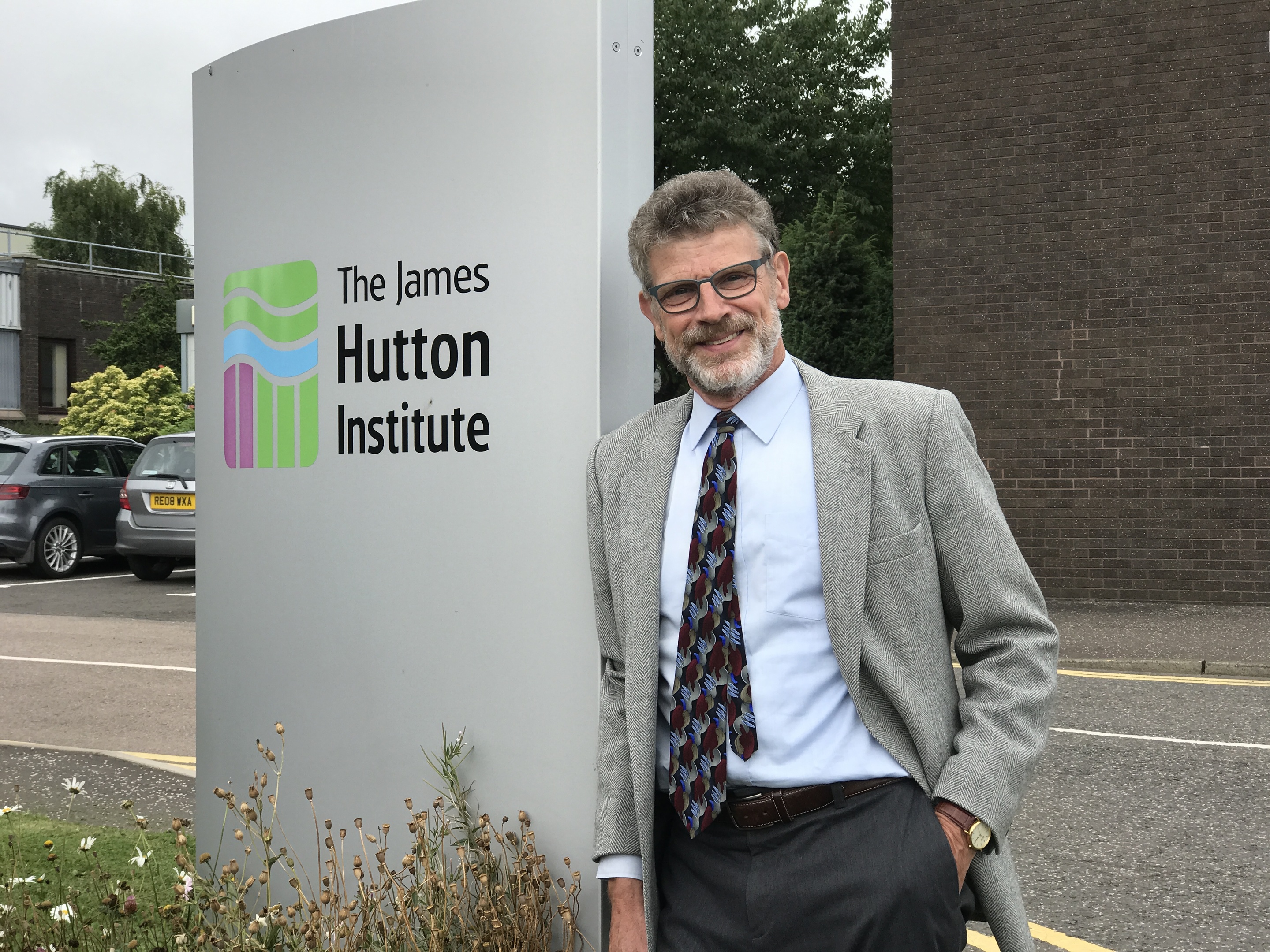When finances are precarious and support is shaky it is useful to have someone on board who can tough it out.
James Curran says he developed a thick skin during his time at the environmental regulator, Sepa, and his experience there exposed him to some of the misconceptions people can have about science and Government funding.
Three years spent arguing that Sepa provides an essential regulatory function as opposed to being a drain on the country’s resources will stand him in good stead as he steers the James Hutton Institute (JHI) through uncertain times and the threat of reducing income that looms in the wake of Brexit.
The most likely impact of the new chairman’s appointment will be a higher profile for the institute as Prof Curran believes JHI has a duty to project the value of its research to Government, customers, stakeholders and the public.
“If we can convince the public of value of work we do in sustainability and the benefits the public would expect, then that allows Government to put money in, because at the moment they don’t have the public support. It’s up to us. We have to put effort into explaining our science in a way that convinces people of its true value – not now but in years to come,” he said.
“We did a socioeconomic analysis of the institute’s output and discovered, conservatively, that every £1 spent here generates £12 of value-added elsewhere in the economy. That’s a fantastic return on expenditure.
“The EU’s Lisbon Treaty had an agreement that 3% of the GDP of every member in the EU should be spent on research and development. The last figure I saw for the UK was 1.7%.We need to keep up with the rest of the world. ”
The Scottish Government supports just over half the work done in the Institute at Invergowrie and in Aberdeen, and the other millions need to be won competitively, historically from predominantly European funders.
“Both of these sources are experiencing some difficulty,” Prof Curran admitted.
“The institute has been fantastically successful in competitive bidding for European research funding, and as we leave Europe we don’t know what the outcome of that will be. I’d very much hope the UK would stay in the European Research Club, but we don’t know if that will happen or not. If it doesn’t happen then those funds will be repatriated to the UK and we would argue they should be spent on the kind of research we do here and we’d need access to competitively bid for those funds.”
As with other aspects of Brexit it is a waiting game, but in the meantime JHI staff are heavily promoting the services of the institute’s commercial arm, James Hutton Ltd.
“We are not standing still,” Prof Curran said.
“We’re actively pursuing other opportunities in the UK and trying to open doors so that we’re ready and waiting should funding be directed down other routes. We’re certainly pushing hard through the commercial arm to get extra work down that avenue because the commercial side of the business can feed funding through to the institute. We’re working hard on our profile, better marketing and publicity, and pursuing opportunities in China and India.”
The other aspect of the UK’s withdrawal from the EU that is preying on minds is the uncertainty over the future of staff that come from 25 European countries. Prof Curran says the institute sets out to attract the best from across the world and provide staff with secure futures, but since the Brexit referendum there has been a downturn in European applicants.
He says his board needs to get the right processes in place to ensure the science being done at the institute is “years ahead of anybody else”. So how much of a brake on ambitions is the Scottish Government’s opposition to genetically modified crops? Prof Curran glanced at a copy of the official JHI line before responding.
“I don’t see it as a brake,” he said.
“This institute is world leading in molecular biology and genetics work. A large part of the world is happy with GMO crops and we cannot, must not, fall behind in the understanding, science and technology of that, but equally we fully understand the European, UK and Scottish Government position and are happy to comply with it. We will pursue genetic techniques, but in controlled situations.”
nnicolson@thecourier.co.uk










